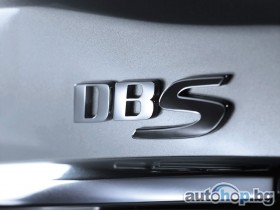Mercedes Benz SLR vs. Bugatti Veyron
The Mercedes-Benz SLR McLaren is an Anglo-German sports car jointly developed by Mercedes-Benz and McLaren Automotive, built jointly in Portsmouth and the McLaren Technology Centre in Woking, Surrey, England. Daimler AG, owner of Mercedes-Benz, also owns 40% of the McLaren Group. Due to the presence of the automatic gear box, front mid-engined arrangement and its driving characteristics lead some commentators to classify the SLR McLaren as a GT whose rivals can be considered to be e.g. the Aston Martin V12 Vanquish and Ferrari 599 GTB. It is the fastest automatic transmission car in the world. SLR stands for "Sport, Leicht, Rennsport" (sport, light, racing). Mercedes-Benz has stated that they will build 3500 SLRs in a span of 7 years, with an annual production of only 500 cars. The car's base price is GB£300,000 (approx. US$495,000 or €475,000, c. 2007). The Mercedes-Benz SLR McLaren is inspired by the Mercedes-Benz 300 SLR of 1955, based on the W196 F1 car, yet named after the road-going 300SL Gullwing. On 4 April 2008, Mercedes announced they will cease production of the SLR. The last of the coupes rolled off the production line at the end of 2007 and the roadster version is due to be discontinued in early 2009. The brake discs are carbon-ceramic and provide better stopping power and fade resistance than steel discs when operating under ideal working temperature. Mercedes-Benz claims these discs are fade resistant to 1200°C. The front discs are internally vented and 370 mm in diameter. 8 piston calipers are used. Rear discs are 360 mm in diameter with 4 piston calipers. During wet conditions the calipers automatically skim the surface of the disks to keep them dry. To improve braking performance there is an automatic air brake, when engaged the rear elevation angle of the rear spoiler is set to 65 degrees. The additional rear downforce in addition to the markedly increased aerodynamic drag increases peak deceleration ~25%. The SLR features active aerodynamics; there is a spoiler mounted on the rear integral air brake flap. The spoiler increases downforce depending on its angle of elevation (angle of attack). At speeds above 95 km/h the spoiler/brake automatically raises to 10 degrees (15 in 722 edition), when demanded via the driver's switch, the elevation can be increased to 30 degrees (35 in 722 version) for increased rear downforce, at the cost of increased steady state drag. The SLR McLaren sports a hand-built 5.4-litre, supercharged V8 engine. The SLR sports a 232-kilogram (512 lb), hand-built, 5.4-litre (5439 cc/331.9 cu in), supercharged, all-aluminum, SOHC V8 engine. The cylinders are angled at 90 degrees with three valves per cylinder and lubricated via a dry sump system. The compression ratio is 8.8:1 and the bore and stroke is 97 millimetre (3.82 in) and 92 millimeters (3.62 in), respectively. The Lysholm-type twin-screw supercharger produces 0.9 bar (13 psi) of boost, the turbine rotates at 23000 revolutions per minute, and the air is cooled via two intercoolers. The engine generates a maximum power of 626 PS (617 hp/460 kW) at 6500 revolutions per minute and a maximum torque of 780 newton-metres (575 ft·lbf) at 3250 revolutions per minute. 2003 models were leaving showrooms at 616 bhp (459 kW/625 PS) and now are slightly increased to 626 bhp (467 kW/635 PS) . Unlike most of its contemporaries, its engine is front-mid mounted. McLaren took the original concept car designed by Mercedes and moved the engine 1 metre (39.4 in) behind the front bumper, and around 50 centimetres (19.7 in) behind the front axle. They also optimized the design of the center firewall.
Comments
There are no comments yet. Be the first one to express yourself!









